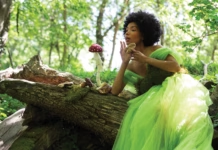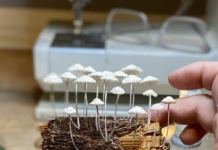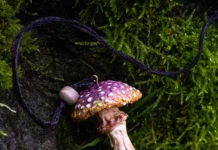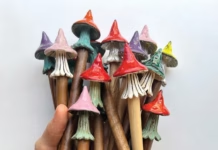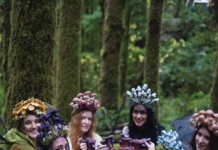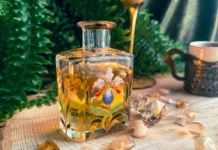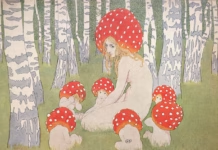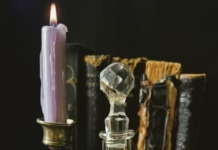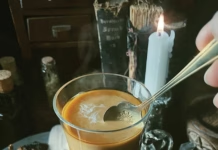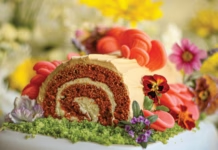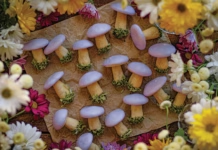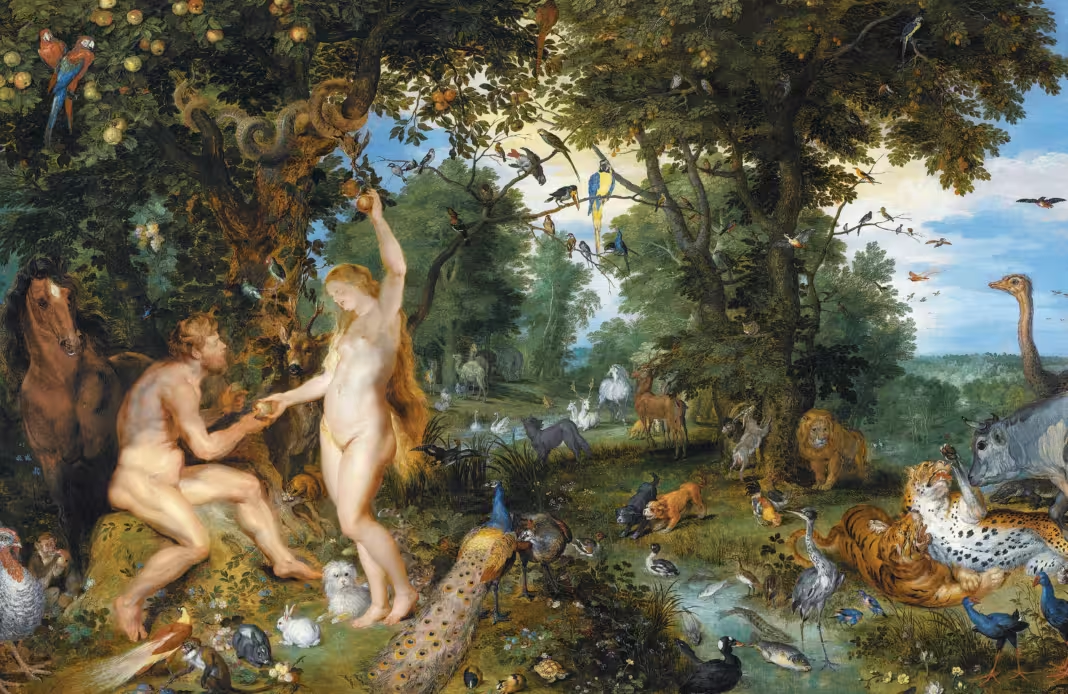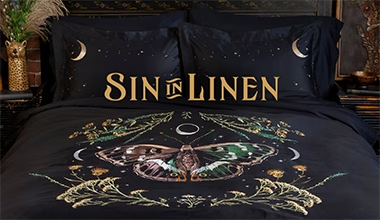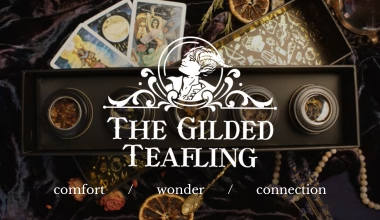Herein lie gardens to dazzle the senses and boggle the mind. Some are meant for a community, some just for you; in a few, you should not touch, taste, even breathe, lest ye be harmed … Some you will have to fight for.
All are within reach if you want to try out your green thumb. Working your own plot can be a form of meditation; it connects you to the cycle of life and rebirth, gives a little aromatherapy, deepens your thoughts and your connection to both natural and human-made worlds.
Maybe we were created in a garden, maybe not. But something has always driven us to shape and prune and rearrange the plants we find in nature according to our varied ideas of beauty and convenience. That means a garden is not exactly “nature” in the sense of what’s growing wild and doing its own thing: It is cultivated, meaning that a human has decided what to grow, where to grow it, and how to keep it flourishing in a complex tapestry of plant life.
That’s not a bad thing. A garden can be every bit the artwork that the Mona Lisa is.
SECRET
First of all, you need a secret garden.
A garden that’s for you and only you—ideally growing where no one else can find it—is part of your self-care, your inspiration, your self-expression. It is the place where you relax and reflect. Secrets emphasize your independence and resilience; something that’s just for you can make you stronger. And, incidentally, that’s good for your community and your planet.
We come to our secret spaces in different ways. Perhaps you’ve stumbled upon a little plot of land somewhere, formerly well tended but now growing wild in an unhealthy way. You yearn to bring it back to its original glory. Let Frances Hodgson Burnett’s 1911 novel, The Secret Garden, be your guidebook. In the classic tale, an unloved, unwanted, and frankly unlikable orphan named Mary Lennox is sent to Yorkshire to be raised by a distant relative. There she hears tell of a rose garden lost behind a stone wall somewhere and neglected for the last decade. As Mary searches for the garden and then learns to restore it, her temperament improves; she makes friends and even solves a Jane Eyre–worthy mystery about the cries that tear through the manor at night. The garden makes her want to be a better girl, and in turn she makes the manor’s menfolk better too. This book has long provided a handy metaphor for the way girls view gardens and their own bodies.
Secret gardens are very personal … and synonymous with women and, metaphorically, their bodies. That high stone wall represents your virtue, ladies—or in more modern terms, it is your self, and you can choose how far to open it up to other people. Or you might struggle not to get stuck in a garden that’s imposed on you, like Alice in Through the Looking-Glass, wherein every attempt at taking a new pathway just leads right back to the house.
A personal garden was a lifelong project for landscape artist Mien Ruys (1904-1999) of the Netherlands. It was conceived over her lifetime as a series of “experiments,” occupying thirty so-called “rooms.” Each one of those rooms has an identity that was important to Ruys’s own growth, from her very first—a harmoniously composed “wilderness” laid out when she was just twenty—to a water garden and more. Both privately and professionally, Ruys celebrated perennial flowers and layers of color rather than monoculture lawns and single-species beds, and she popularized the “desire path”—a trail not planned but created naturally by the feet of animals and humans, meandering as the fancy takes them.
Many cities feature small horticultural gems hidden behind walls. You pass a courtyard door just as it swings shut, and you glimpse a miniature parterre, a formal garden with symmetrical flowerbeds, everything balanced and stately. Or in London, you make a pilgrimage to the Chelsea Physic Garden, founded in 1673, where you find five thousand healing plants behind a tall brick wall.
When you create your own precious sanctum sanctorum, you don’t owe anyone a glimpse of or a say in what you’re growing. That’s the idea. If you don’t have a wall, put up a privacy fence. Grow a tall hedge. Or just let the trees and bushes around your property go wild and create a thorny tangle. Use the space within for painting, writing, reading, dancing, meditating—whatever feeds your most secret self.
MAZE
A maze is perhaps more a garden feature than a garden in its own right—but have you ever been lost in one? The twists and folds of boxwood or yew hedge make the space telescope to contain entire worlds. And they just might include a secret garden too.
A maze represents the path we take toward enlightenment. In Christian (and formerly Christian) tradition, labyrinths are a part of religious allegory, whether growing from hedges or laid out in stone on a cathedral floor. There might be just one path to the center, or you might have options. Either way, as you aim toward the peaceful space in the middle, sometimes you seem to be getting very close to grace and fulfillment, only to find another turn taking you back to the outer edge. Frustration and feeling lost are a part of the allegory you’re living—wait, I mean part of the fun. When you finally reach the center, you might find a fountain, bench, or tower in which to contemplate the journey and the future (or sneak a quick kiss or photo with the person who got lost with you). If you’re lucky, no one else arrives for a while, and it is your personal Eden.
A single fragrant rose blooming alone there is sometimes called the rosa mundi, the rose of the world (not to be confused with the garden rose of that name). The name is a nod to Rosamund Clifford, the alluring mistress of England’s King Henry II. Folklore says that to protect Rosamund from seducers and a jealous queen, Henry built her a castle that was also a knotty maze, with the beauty in a garden at the center. That single flower can also refer to the Roman de la Rose, an epic French poem of the 1200s in which the Lover seeks to find a beloved who is represented as a rose blooming behind a complicated stone wall. A labyrinth with love in the center is a powerful symbol for all sorts of quests, and for life itself.
Mazes are featured at several châteaux of the magical Loire Valley, which brims over with almost too many treasures. At Villandry—world-famous for all its gardens—the squared-off labyrinth follows a traditional Renaissance pattern and there’s just one path to the center. And at Chenonceau, the brightest jewel in the valley’s well-studded crown, a round maze is a short hike from the castle and a world apart. Surrounded by woods, it’s a get-yourself-lost puzzle.
The most famous garden maze in the world is at Hampton Court, near London, and it’s a notorious wedge-shaped puzzle that takes an average of twenty minutes to solve. Designed around 1700 at the behest of William III (a.k.a. William of Orange), it’s a star in its own right, having been featured in Virginia Woolf’s 1919 novel, Night and Day, and Michael Bond’s Paddington Bear and the Marmalade Maze. You’ll also recognize it from the movies Mamma Mia!: Here We Go Again and The Favourite, the series Queen Charlotte: A Bridgerton Story, and a dizzying array of other inked and filmed productions. Perhaps getting lost there is just what you need for your next big chapter.
HANGING
The second-most famous horticultural hotspot in history, the Hanging Gardens of Babylon, were designed around 600 BCE with the intent to make a tall building look like the mountainous landscape of a queen’s former home. Trees and plants were cultivated on a series of tiered terraces that rose toward the sky in a marvel of engineering and irrigation. Webs of scent floated down from all those blossoms, entangling passersby. They looked toward the sky, wondering …
The Hanging Gardens were in fact one of the Seven Wonders of the Ancient World—and they are the only such wonder for which we have no archaeological evidence, since they were lost to an earthquake in 226 BCE. Or maybe the evidence is all around. Seeds that blew off a rooftop sowed the surrounding area with flowers and trees that now are simply what grows.
A hanging garden (you have deduced by now) doesn’t so much hang as it rises. Its plantings are not rooted in the earth; it brings soil up onto a human-made structure. So those kitchen herbs you grow on your windowsill qualify, and so do the potted trees and plants on your rooftop or balcony.
Hanging gardens are some of the most spectacular—and planet-friendly—you’ll see today. For Willie Wonka–style dramatic impact, visit the Jardins Suspendus de Marqueyssac. Located in Vézac, France, on the grounds of a turreted castle, the site is the dreamchild of a military man who retired in 1861 and unleashed his creativity (beating his sword into a ploughshare, as the saying goes). There are fifty-four acres of otherworldly topiary, cyclamen, and secret nooks and pathways growing on terraces hewn into the cliffs above the Dordogne River. Not to mention dozens of peacocks.
In a more casual hanging garden on Manhattan’s Upper West Side, the High Line stretches for almost a mile and a half along an old spur of New York Central Railroad. The tracks almost vanish under plantings inspired by the weeds that once struggled along them; railroad ties emerge here and there as a flirty reminder of how this refreshing space emerged out of the arc of history, industrialization, and urban decay.
Like the High Line, your own hanging garden can create a green-lunged haven with a big environmental impact. In Paris, the bee and butterfly populations surged after a citywide push to grow pollinator-friendly flowers on rooftops and balconies. Urban green corridors like the High Line and the hanging gardens of Paris’s La Défense can reduce nearby temperatures by as much as ten degrees on a hot day. You can attract pollinators with plants like black-eyed Susans, cosmos, lavender, verbena, coneflower, and more. Choose organic plants and seeds to avoid chemicals toxic to the pollinators.
Here’s hoping that we can beat more swords into garden trowels.
POISON
Maybe you’re a modern-day Brother Cadfael who lingers for hours over an herb garden. You rub sweet, pungent basil and lavender between your fingers; you harvest lemon balm to heal scratches, oregano for digestion, saffron for insomnia. I hope you also have a sizable patch of mint, because some people swear by it as an antidote to poison (no guarantees here). And somewhere just down the road, someone is growing mugwort, henbane, devil’s cherries, and angel’s trumpets, all with malicious intent.
As an idea, the poison garden is probably as old as horticulture or even agriculture. In the words of Renaissance physician Philippus Aureolus Theophrastus Bombastus von Hohenheim, a.k.a. Paracelsus, “There is no substance which is not poison. The difference is in the dosing.” This means that even the wonder drug that has saved your life could be the same substance that ends it.
It’s a quick jump from a monastery’s garden of healing to a witch’s (theoretical) plot of malevolence. Medieval people looked on monastery gardens with approval, but any wisewoman’s medicinal garden might be a plot full of ingredients to render a woman infertile, a man impotent, a cow dead of the bovine plague Rinderpest. And sometimes it did happen …
Here are a few of the greatest hits we love to see in a poison garden:
• Foxglove, or digitalis: As a medicine, it can bring the beat back to a slow heart; in a different dose, it could speed a heart up so fast that it beats itself out. It also makes some very pretty flowers.
• Hemlock: This is the plant that sent Socrates off to his reward. Even if you never brew that particular tea, you should keep some hemlock growing as a monument to women and men who know too much and dare to ask questions.
• Belladonna: Popular for Ancient Roman murders, this extremely poisonous plant was ingested during the Renaissance—in small quantities—to dilate the pupils and make eyes appear bigger and brighter. At what price beauty …
• Mandrake: The infamous root looks like a human figure, right down to the genitalia (which are usually seen as male, sometimes female). It is so potently poisonous that it must be harvested in the full moon. Don’t be alarmed—it screams as it leaves the earth, yes, but that’s just science.
You’ll find all these plants and more in the Alnwick Garden in Northumberland, England, where the world-famous Poison Garden does not mince words or toxins. Over a hundred species of deadly, hallucinogenic, and narcotic plants grow behind tall iron gates. Entry is by guided tour and for intrepid souls only; although your guide will prevent touching and tasting, visitors have been known to faint from inhaling the air in which laburnum, hellebore, opium poppy, and much more respire in deadly photosynthesis. The same warnings apply at Ireland’s Blarney Castle, where the poison garden is intended to educate visitors about commonplace plants that turn fatal when cooked into something else—soaps, jams, teas … It really is all in the dose and, in this case, the concentration.
A poison garden is perhaps the ultimate secret, or it should be. A very tall fence should keep out the most curious neighbors and help make sure that there’s enough toxic material left for your needs.




